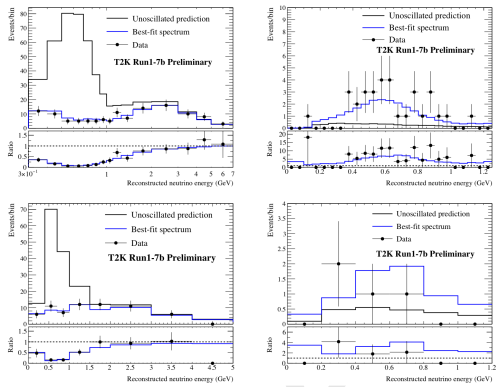
Deep trap: Inside the Super-Kamiokande neutrino detector. (Courtesy: T2K Collaboration)
By Tushna Commissariat
As you may have read, earlier this week I was at Neutrino 2016 – the 27th International Conference on Neutrino Physics and Astrophysics – in London. Although I was only at two days of the week-long conference, I still have neutrinos on my mind. A whole host of experiments presented various data and updates. Indeed, the researchers presenting the latest results from the Tokai to Kamioka (T2K) experiment in Japan and the NOvA Neutrino Experiment at Fermilab in the US had some interesting things to say.
T2K collaborator Hirohisa Tanaka, from the University of Toronto in Canada, revealed that the experiment’s most recent data seem to support earlier hints that there may be different oscillation probabilities for neutrinos and antineutrinos. If these data hold up, then it would have big consequences – the standard model of neutrino physics says that these two oscillation rates should be the same so as not to violate charge–parity (CP) symmetry. According to the collaboration, their observed “electron antineutrino appearance event rate is lower than would be expected based on the electron neutrino appearance event rate, assuming that CP symmetry is conserved”.

Neutrino (top) and antineutrino (bottom) event distributions at the T2K far detector (Super-K), for both muon (left) and electron (right) flavours. In each figure, the black points show T2K antineutrino data, the black curves show the expectations for the case of no neutrino oscillation, and the blue curves show the expectation for the best fit oscillation parameter values. (Courtesy: T2K collaboration)
These data mean that T2K saw more matter than antimatter in its experiment – a universal feature that we still do not have an explanation for. But the data are only at about a 2σ level right now, which is nowhere close to the 5σ gold standard needed to claim a discovery. Along with more data in the coming years, T2K also has a planned upgrade that will boost its sensitivity in the next decade or so, allowing us to answer one of the most fundamental questions about our universe – why matter dominates over antimatter, when both were produced in equal amounts at the Big Bang.
The latest data from the two-year old NOvA experiment also line up with T2K findings, boosting the possibility that the oscillation rates are truly different. A more interesting result, as presented by NOvA’s Patricia Vahle, who is based at the College of William and Mary in Virginia, was the fact that the long-baseline experiment’s data for the third mass-state, based on oscillations of muon and tau neutrinos, was found to have “non-maximal mixing”.
One of the questions raised by NOvA is whether one of the mass states, known as the third mass state, contains an equal mixture of muon and tau neutrinos. Previous experimental results suggest that the third state should contain equal amounts of muon and tau neutrinos or a “maximal mixing” scenario. If true, it would be evidence of a new conservation law. But NOvA’s result is currently only at 2.5σ, there is still a 1.2% chance that maximal mixing could have been produced, so once more we have to wait for more data.
It really seems that the causal set model of the electron-neutrino describes the physical reality that’s producing the oscillation data. Because causal sets form frequency ratios, defining energy ratios in accord with E=hf, purely dynamic causal set particles (progagations) have characteristic DeBroglie values. The electron-neutrino is one of the simplest particles to show up in primitive particle construction using the directed graphs of causal sets.